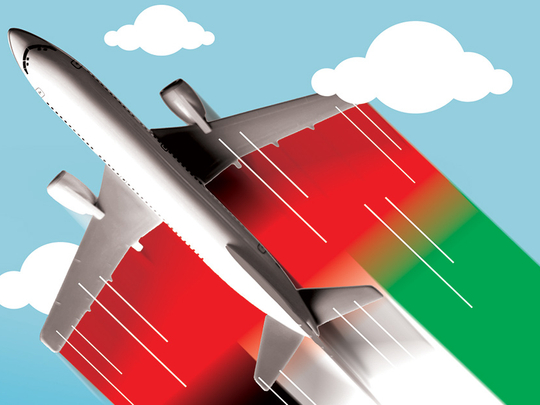
Over the last decade, the UAE has turned itself into a top-notch global tourism hub — an impressive effort that managed to overcome many a perceived obstacle initially believed to be there. This provides a vivid example of the nation’s capabilities and a result of sound policies and a leadership capable of implementing such decisions.
The UAE’s experience in this regard represents a real success story for others to benefit from, especially the rest of the GCC which do share a lot of similarities, including the financial and natural capabilities.
In fact, the dream of becoming a global tourism hub was not achieved overnight. But the strong foundations paved the way for the dream to become reality.
The planning to effect such a transformation actually began in the 1950s and 1960s when the individual emirates were recognised as offering a competitive regional market for different types of goods and which could attract sizeable interest from traders and shoppers. The so-called shopping-driven tourism has, in particular, led to tremendous development of the re-export trade, where the UAE ranks first and without any visible competitor.
With the discovery of oil and its revenues, new horizons were opened for the development of other forms of tourist activities, such as a host city for exhibitions and conferences apart from retail tourism. The oil boom of the early 1980s provided extraordinary capacity for the development of the sector.
Decision-makers made the best use of it in an intelligent manner, and adopted long-term programmes for further development and create the infrastructure to be on par with the world’s top tourist destinations.
The UAE worked in several directions and on more than one level. Developing tourism infrastructure was rated a priority goal and without which it would be impossible to talk about any progress in developing its non-oil economic activity.
The key shift came with the establishment of Emirates airline in 1985, and thereafter of Etihad Airways, Air Arabia and flydubai. The UAE currently owns one of the largest international airline networks and the most up-to-date and competitive carriers.
Expanding its services to all continents, these airlines have been able to develop a fleet capacity of more than 450 aircraft to carry tens of millions of passengers each year, including the millions visiting the country for shopping, business, entertainment, treatments and sports activities.
The airlines and the immense development in airport infrastructure — with a capacity to handle up to 100 million passengers in the current year compared to less than 30 million a decade ago — is a milestone that constitutes one of the pillars of the tourism sector.
Developments in aviation coincided with massive investments into the hospitality sector. The private sector’s response to these initiatives were just as impressive, backing them with steady funding outlays on tourism-related infrastructure in a relatively short period of time.
Total investments in the tourism sector has soared to Dh230 billion in the past 10 years alone, leading to increased contribution to the GDP by the travel and tourism sector of Dh122 billion this year (equivalent to 8.5 per cent of GDP), according to the World Travel and Tourism Council. This is considerable in that it contributes significantly to supporting the strategic approaches to diversify sources of income.
Its contribution to GDP is set to rise to 10 per cent in 2020 and 12 per cent in 2025 — high percentages almost similar to those in top-tier global destination.
Apart from the growing numbers for exhibition-driven tourism, that led by medical and wellness is expected to see noticeable growth in Abu Dhabi and Dubai. In Abu Dhabi, renowned health care facilities have opened, such as Cleveland Clinic, while in Dubai, Healthcare City continues to attract investments, including the largest privately owned hospital in the Middle East.
Of late, “festival” tourism has emerged as another growth prospect through the hosting of film, cultural and media extravaganzas. Combined with the other tourism streams, it could grow to 40 million visitors in 2015, equivalent to four times the population and ensure cash flow of about Dh110 billion into the country, where will further contribute to non-oil GDP numbers.
Also, Abu Dhabi Airport’s expansion plans are expected to be completed in the medium term, which would double capacity. Dubai is building the Trade Centre — Jebel Ali on top of the investments on Al Maktoum International Airport to increase capacity to 200 million passengers a year. The number of passengers through Dubai International Airport will be 70 million this year compared to 60 million in 2013.
Cruise tourism too has gained in stature with Port Rashid in Dubai designated to exclusively receive large cruise vessels.
In September, Abu Dhabi Ports Company (ADPC) and Abu Dhabi Tourism and Culture Authority unveiled the concept design of a permanent cruise passenger terminal to cope with growing demand, which is expected to grow by 16 per cent during the current season. This will increase the number of tourists from 190,000 last season to 220,000, while bringing the number of ships handled to 92.
Such investments in the tourism sector is economically justified. This is simply because the economic diversification seriously sought by the UAE requires such exposures and vital to prepare for a post-oil era.
Tourism is set to play a more and key economic role in the future, which strongly proves to the world that nothing is impossible in business and finance and in economic development.
Like Singapore, which set the model by transforming a water swamp into an advanced welfare state, the UAE will create its own model by transforming desert and coastal cities into a tourist paradise, a thriving economy tuned to the welfare of its people.
Many nations, particularly Arab ones, too can benefit from the UAE’s track record of development.












